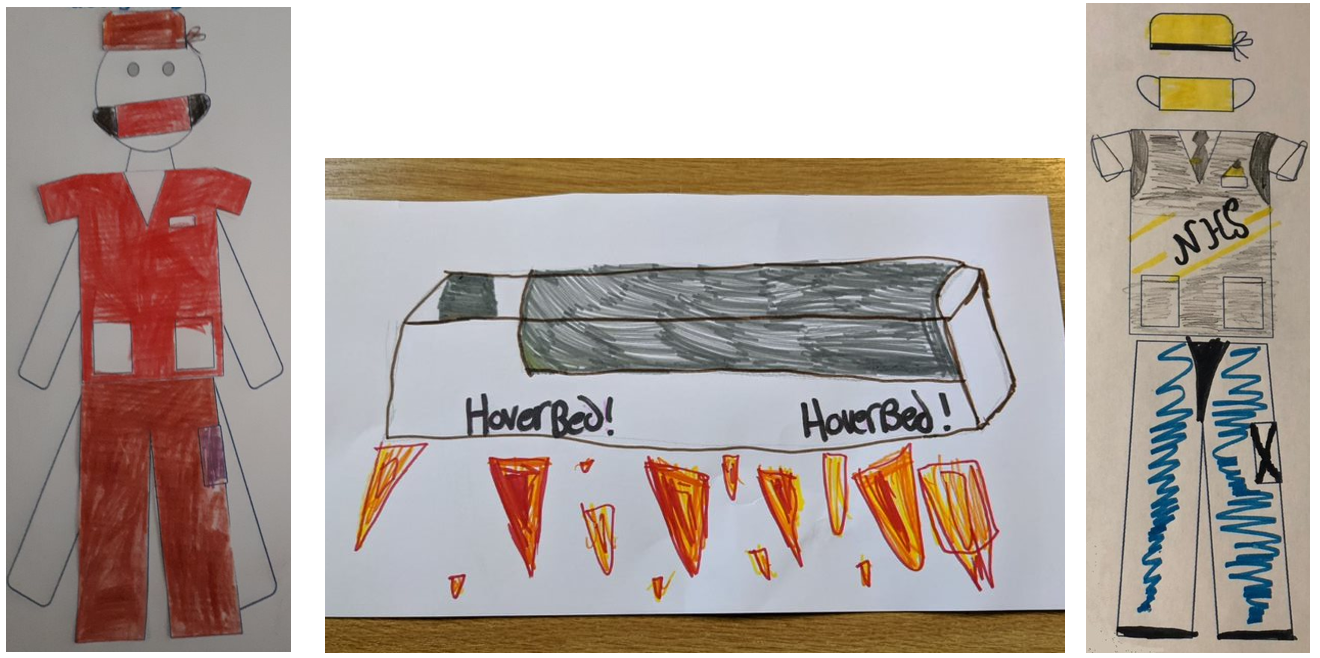Impact of innovation: Foreword
Hear from the leads of this workstream and read a summary of what children and young people think about innovation.
“Innovation is seeing what everybody has seen and thinking what nobody has thought.” – Dr Albert Szent-Györgyi
From the leads of this workstream
Take a second when you next undertake an out-patient clinic or clinical shift to think about what has changed about this activity in the last 20 years, the last 10 years and then just the last year. It’s likely the biggest change has come about in the last year, such is the impact of the COVID-19 pandemic on all our lives. It’s likely you are now doing your outpatient clinic from your own home or perhaps chairing a multi-disciplinary meeting via Teams. The world has truly been turned upside down.
What has been the role of innovation in responding to the challenges that the pandemic has brought? Have we risen to the challenge and created new technologies and approaches or simply starting implementing initiatives that have always existed?
This is a conundrum for both defining and delivering innovation. One person’s innovation is another’s standard technique, such is both the variation in care and difficulty in sharing good practice that pervades through healthcare.
The ability to host clinics and meetings remotely has existed for years; we just haven’t adopted it. However, reconfiguring whole health systems to respond to different demands has truly required some innovative thinking. Sometimes this has been to the disadvantage of children and young people who have been side-lined due to the need to create significant capacity to care for adults with respiratory disease. This inequity in the impact of innovation is not a new thing though.
We’ve learnt a lot in this working group about the relatively scant amount of evidence that specifically exists around new technologies for children and young people. We also have a a great deal to share on approaches we need to take, as paediatricians, that will ensure children and young people are well served by innovation in the future. This doesn’t just mean we will require those with engineering or design backgrounds to deliver new ideas, it means everyone has to contribute in creating an environment that will let innovation flourish. Vitally this involves including children and young people themselves, not only in the development and feedback of technologies but also with easy access to it.
It has already been noted that COVID-19 is widening the inequities that have already existed in our society. As advocates for children and young people innovation is important to all to ensure that children don’t continue to be disadvantaged in the future.
Dr Damian Roland, Co-Chair for the Paediatrics 2040 Innovation Workstream
Dr Hannah Jacob, Co-Chair for the Paediatrics 2040 Innovation Workstream
Professor Russell Viner, RCPCH President 2018-2021
Alison Firth, Paediatrics 2040 Project Manager, RCPCH
From RCPCH& Us, the voice of children, young people and families
We really liked thinking about how we might be using technology or doing things differently in the future but also thought that the last year has taught us so much because of being virtual.
We want to make sure though that health appointments and health care still feels personal and doesn’t feel rushed when we think about using technology in the future, plus that it is open and accessible to everyone in an equal and fair way.
“For some getting to an appointment in person is really hard with a 30 min drive in a car … or on a bus and you might not have access to a car or be anxious about going on the bus so doing it digitally could remove those barriers.” RCPCH &Us 2020, Northern Ireland
It could be much quicker in the future because of things being done differently and using technology, maybe there won’t be any waiting lists or missing so much school because of virtual appointments or using text messaging and virtual diaries to support long term conditions and sharing medical information.
Technology could be used to explain conditions and treatments using 3D images or other ways of showing child friendly information using language that works for different ages, maybe you can select your language and age and it changes! It is still important to be able to talk to someone, sometimes it is overwhelming everything being online or where you have to read the information online yourself.

